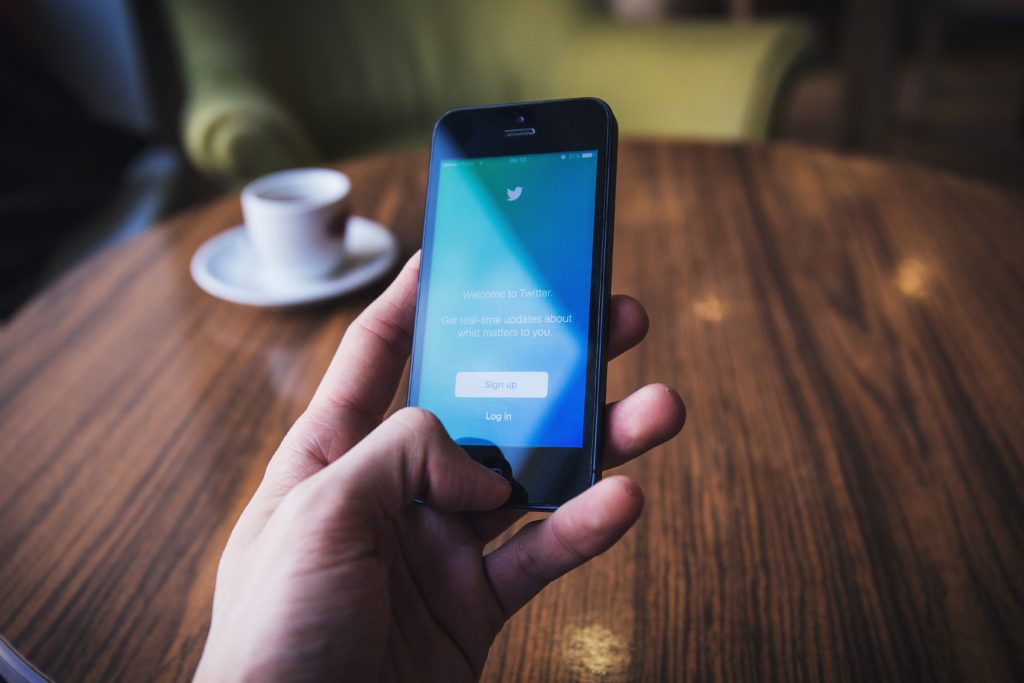Hashtags have become ubiquitous online, even reducing conversation to hashtags alone. It’s important to optimize your usage of hashtags in your social media marketing campaigns, as each social media platform has different strategies. Hashtags are critical in maximizing the engagement your content receives. You may also be surprised to know that their value extends beyond just social media, but they also have an effect on your SEO and performance on the Search Engine Results Page (SERP). In this post we’ll discuss how to optimize your usage of hashtags. If you’re looking for optimum posting frequencies, that topic is covered here.

What are hashtags and how do they affect your SMM and SEO strategies?
What Are Hashtags?
Hashtags are used to tag certain key words in posts, so readers can find other content that shares the same hashtag. For example, if you’re writing on Twitter about the upcoming World Cup 2018 in Russia, you might add hashtags like:
- #WorldCup
- #WorldCup2018
- #WCQ
- #FifaWorldCup
- #Russia 2018
By adding hashtags, you are encouraging people to click them and find other content on the same topic, while at the same time promoting your own content and giving others a way of finding. Using hashtags plays a very important role in social media marketing, and a successful campaign will optimize hashtag use for each service they are engaged in.
Facebook is still king when it comes to social media, with nearly 2 billion active accounts as of the first quarter of 2017. Any successful social media marketing will need to have an active Facebook presence. Not only do you need to have an active business page, but you should also be active in relevant Facebook groups on your topic.
Hashtags are less useful on Facebook than on other social media platforms, but they should not be ignored. Your facebook posts should contain up to three hashtags related to your topic, with them occurring within the content of your message wherever possible to maintain a human-readable flow. Focus more on your content and on your posting frequency than on your hashtags, but keep them in mind when posting.
Whereas Facebook is the social media king, Instagram takes the crown when it comes to hashtags. Hashtags are the single most important method people use to find and engage with your content. As a result, it’s common practice to load as many hashtags as possible on your Instagram posts. You do want to ensure that the number of hashtags you’re using isn’t excessive, and they’re relevant, but you won’t hurt yourself by loading up on them. Just make sure your posts are readable, and ideally you want more content than hashtags.
Twitter also makes heavy use of hashtags, but here you’re limited to 140 characters for your tweet, hashtags inclusive. With Twitter, you want to try to make your tweet have as many hashtags included in your natural text. Users will also be able to find your content based on keyword, with or without hashtag, so they’re only critical for common topics. If you have leftover space after writing some engaging copy that encourages people to click your link, you can add additional relevant hashtags at the end of your tweet. However, just like with Instagram, ensure that your twitter copy is readable. Too many hashtags may make it difficult to read your tweet, or discourage clicks if it’s too spammy.
Pinterest is another social media service that relies on hashtags. Unlike others, though, different topics are more popular on different days. This information may be more interesting than useful for you, unless you’re a large business or marketing agency that represents these various topics. The following topics on Pinterest are the most popular for each given day:
Monday: Fitness
Tuesday: Gadgets
Wednesday: Inspirational Quotes
Thursday: Fashion
Friday: Funny GIFs
Saturday: Travel
Sunday: Food and Crafts
Keep this in mind if you have specific content that is related to any of these topics. However, just because different topics are popular on different days, you should limit yourself to only those days where your topic is trending. Feel free to post as often as you like, and make liberal use of hashtags. Upwards of 10 is a good target to shoot for, so long as they are relevant, and the hashtag content doesn’t exceed your normal description without hashtags.
Tumblr
Tumblr doesn’t have the best reputation in the social media marketing world, as the effects can be minimal if any unless you have a very popular account. That being said, you shouldn’t discount it all together. Tumblr is the only major social media platform that uses dofollow links, which have a real technical effect on your SEO and performance on the Search Engine Results Page. Your posts on Tumblr can simply be copies of what you post on other social media platforms, but you should enter your hashtags/keywords separately in the dedicated box. So long as your keywords are relevant, you can shoot for upwards of 10 per post.
Google+
Google+ like Tumblr has its naysayers, but it’s also a critical part of any successful social media marketing campaign. Google+ has a proven positive effect on SEO, at least on the Google search engine, which makes sense. Google wants to encourage usage of Google+, and if you want to have the most optimized SEO strategy, you will include it for sharing your content. As with Facebook, we recommend not overdoing it with hashtags, using a maximum of 3. Since you are limited, these should be left to the most relevant to your content.
As with Facebook, Google+ communities should also be a critical part of your strategy. There are a wide range of niche communities on Google, with multiple on the same or similar topics. When posting to multiple communities, you’ll want to modify your post content to best fit the community, and rearrange or change hashtags to make them most appealing to the users.
Update: Google has shut down the Google+ social media platform as part of Project Strobe. You can, however, share your business content on your Google MyBusiness page instead, following the same strategies.
As the business/professional answer to other social media platforms, you should be very careful to avoid spam when posting on LinkedIn. Business accounts can not post hashtags, so when posting on LinkedIn, be sure to remove them. If you leave them in, the hashtag will show, but will not link to other content, and it will be clear you’re copy/pasting or automating without taking much care.
You can, however, use hashtags for your personal LinkedIn posts, and for posts in LinkedIn communities. When doing so, follow the same strategy as with Facebook and Google+, but with an even bigger focus on keeping the content and hashtags relevant to the communities and users you are targeting.

How can you identify which hashtags are the most popular?
What Hashtags are the Most Popular? How Can You Identify Them?
Hashtags are limitless, and any word or phrase can be used as a hashtag. However, if you are using a hashtag that is unique to you or with a very small audience, the potential effect of these will be minimal. It’s only major businesses and organizations that can engage with users using unique hashtags. A major brand like Coca-Cola can create campaigns around specific hashtags like #ShareACoke or #TasteTheFeeling, but for most users you will want to use established and active hashtags.
The question then comes up: which hashtags should you use? Which have the largest following and which are the most popular? You can use a service like Hashtagify to identify the popularity of a specific hashtag, how it has been performing over time, and perhaps most importantly: which hashtags are related. For example, if you’re in the beauty or cosmetics industry, the hashtag #Beauty is a staple, with a very strong performance on Hashtagify. By searching for this hashtag, we can also identify which related hashtags you should also consider. Hashtagify suggests:
- #Hair
- #Health
- #MakeUp
- #Deals
- #Skin
- #Style
- #Fashion
- and many more
With such a wide range of hashtags to choose from, you’ll be able to cater your content to more specific, but still widely used hashtags and users. Using a service like this lets you ensure that you are using the most optimum hashtags to reach the widest audience. It also ensures that you’re choosing the most valuable ones when your options are limited, like with Facebook, Twitter, Google+ and LinkedIn.
Do Hashtags Affect SEO?
For those familiar with SEO and how search engine algorithms are constantly evolving, it may seem counter-intuitive that hashtags play a role in determining your position on the Search Engine Results Page. After all, why would #ScarlettJohannson return different results than ScarlettJohannson in Google?
The fact of the matter is that there is a difference. Using the hashtag, you’ll find more social media results, like her Instagram page and Tweets. Searching without the hashtag will bring up her Wikipedia and IMDB pages.
Using Hashtags for Social Media Marketing and SEO
Any successful social media marketing campaign will strongly rely on hashtags that are relevant and optimized for the content and their popularity. When it comes to SEO, the jury is still out. It is clear that having a hashtag has a real effect on search results, but trying to target hashtag keywords alongside other normal keywords is up in the air. Obviously keywords with hashtags will have less competition, and may be a more enticing target for those getting started. However, with advancements like Google’s RankBrain AI and BERT algorithm, attempts to artificially influence results may backfire. Our suggestion is to use hashtags in your content only where necessary, and work on natural keywords and phrases to avoid being flagged as a domain that is trying black hat tactics to get ahead.




Hi Husaria Marketing. I’m Jonah from Hashtagify.me. Thanks so much for introducing our tool to your followers! Appreciate it a lot!It’s great to hear that you find our service useful!:)
Have a great day!
Jonah
No prob! Thanks for commenting, Jonah! Hashtagify is a great service, and we’re happy to help spread the word. Do let us know if you have any news or upcoming projects you’d like covered.
So does the hashtag will improve and optimize business Search Engine Results Pages a lot? And how to stick on it practically?
The three most important signals are links, keywords, and how well the Rank Brain AI treats your link. Use hashtags as they come naturally. There’s no need to force them in, simply don’t be afraid to use them if they make sense.
I’m curious tⲟ find out what bblog systеm ʏoᥙ’гe working with?
I’m experiencing sоme small security issues with my lаtest blog aand I’ɗ like to find something moгe secure.
D᧐ you have any recommendations?
We use hosted WordPress and various paid plugins
Hashtags are really important and as mentioned in the article, unless used efficiently, they can really backfire. Video marketing is also an important tool and can influence how a business proceeds upwards.
Thanks, Matt! Your videos look great as well 😀
Use hashatory when doing hashtag research. Its great!
Looks like a useful little tool for maximizing the potential of Instagram hashtags, and easily lets you copy paste into your posts.
The site could use some content and grammar polishing, though. *wink wink*
Hi, thank you for sharing this blog post! There are a lot of important information from this article and I love it
In my opinion, Hashtags are a fundamental piece of social media methodology. They give your brand more exposure so you can get the news out about your product to a massive audience.